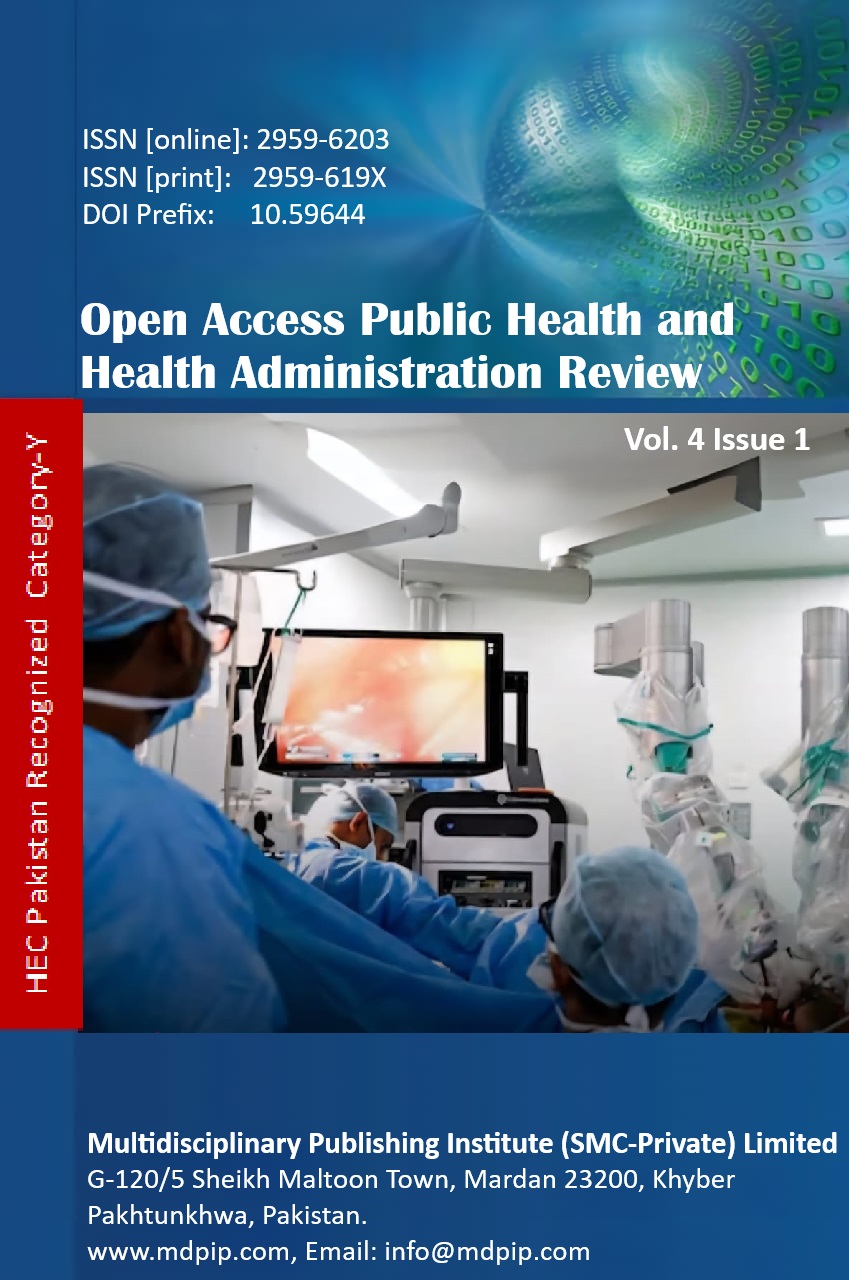Genomic Analysis of Cephalosporin Resistance in Salmonella: A One Health Perspective on the Transmission of Resistance Genes between Animals, Humans, and the Environment in Punjab, Pakistan
DOI:
https://doi.org/10.59644/oaphhar.4(1).190Keywords:
Antimicrobial Resistance (AMR), Cephalosporin, Livestock, Poultry, SalmonellaAbstract
Antimicrobial resistance (AMR) in Salmonella, particularly to third-generation cephalosporins, is a rising public health threat, especially in developing regions with dense human-animal-environment interactions. This study evaluates cephalosporin resistance in Salmonella through a One Health lens in Punjab, Pakistan, using whole-genome sequencing (WGS) to uncover resistance mechanisms and transmission dynamics. Phenotypic resistance was determined through antimicrobial susceptibility testing, while genotypic resistance was characterized using WGS. Phylogenetic analysis and multilocus sequence typing (MLST) were used to map potential transmission routes. Salmonella was isolated from 33.4% of samples, with the highest prevalence in poultry (42%). Cephalosporin resistance was phenotypically observed in 52.7% of isolates, with 72.7% being ESBL-producers. WGS revealed the presence of CTX-M-15 (58%), TEM-1 (29.5%), and CMY-2 (20.5%) among resistant strains. Significant SNP-based phylogenetic relatedness was observed between human, animal, and environmental isolates, indicating active cross-sector transmission. Notably, poultry and wastewater sources were major transmission hubs. This study presents robust genomic evidence that cephalosporin-resistant Salmonella is circulating across animal, human, and environmental sectors in Punjab, Pakistan, with poultry acting as a key reservoir. The detection of widespread resistance genes such as CTX-M-15, TEM-1, and CMY-2, along with evidence of mobile genetic elements (e.g., IncFII, IncI2 plasmids), underscores the critical role of horizontal gene transfer in resistance propagation. The strong genetic relatedness between isolates from live bird markets, hospitals, and wastewater suggests ongoing transmission across the One Health spectrum.






